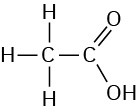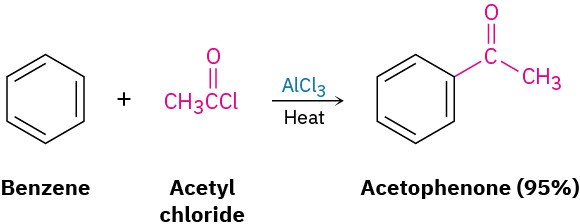10.2 Preparing Aldehydes and Ketones
Preparing Aldehydes
Perhaps the best method of aldehyde synthesis is by oxidation of a primary alcohol, as we saw in Section 9.8. The reaction is usually carried out using the Dess–Martin periodinane reagent in dichloromethane solvent at room temperature:
 Problem 10.3
Problem 10.3
How would you prepare pentanal from the following starting materials?
(a) CH3CH2CH2CH2CH2OH
(b) CH3CH2CH2CH2CH=CH2
(c) CH3CH2CH2CH=CH2
Preparing Ketones
For the most part, methods of ketone synthesis are similar to those for aldehydes. Secondary alcohols are oxidized by a variety of reagents to give ketones (Section 9.8). The choice of oxidant depends on such factors as reaction scale, cost, and acid or base sensitivity of the alcohol. The Dess–Martin periodinane is a common choice although chromic acid (H2CrO4) was frequently used in older work.
 Other methods include the ozonolysis of alkenes in which one of the unsaturated carbon atoms is disubstituted and Friedel–Crafts acylation of an aromatic ring with an acid chloride in the presence of AlCl3 catalyst (Section 8.5).
Other methods include the ozonolysis of alkenes in which one of the unsaturated carbon atoms is disubstituted and Friedel–Crafts acylation of an aromatic ring with an acid chloride in the presence of AlCl3 catalyst (Section 8.5).


Problem 10.4
How would you carry out the following reactions? More than one step may be needed.
(a) 3-Hexyne → 3-Hexanone
(b) Benzene → m-Bromoacetophenone
(c) Bromobenzene → Acetophenone

